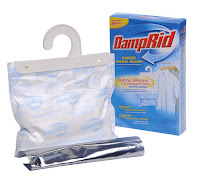
 One thing you may not know about Climate Control storage is that the title is not clearly defined. To most in the self storage business, it means they are going to run the heat and air during appropriate times of the year. While that sounds intelligent, preventative, and beneficial to your electronics, photos, antiques, furniture and other valuables, what you really need to know is not what temperature their thermostat will be set at, but what level of humidity they strive to maintain.
One thing you may not know about Climate Control storage is that the title is not clearly defined. To most in the self storage business, it means they are going to run the heat and air during appropriate times of the year. While that sounds intelligent, preventative, and beneficial to your electronics, photos, antiques, furniture and other valuables, what you really need to know is not what temperature their thermostat will be set at, but what level of humidity they strive to maintain.Here in Nebraska and Iowa, we have humidity issues in our homes, work places, and, admittedly, in some storage facilities. At Dino’s Storage, we have added dehumidifiers to key buildings and key floors and we strive to keep humidity below 60%. Anything higher and you may be playing with danger. While I will say that some times of the year we battle the humidity, we do our best to keep humidity levels at appropriate levels. Rest assured, mold or mildew will not develop from one day of high humidity, or even three days. It’s the long term, continuous high levels combined with other factors.
Ten steps you as a self storage customer can AND SHOULD do to keep your items in their same condition as when you left them are below:
 1. Check on your unit monthly to get the air circulating.
1. Check on your unit monthly to get the air circulating.2. Don't use plastic bags; they lock in moisture.
3. Before storing clothes, dry them a second time so they are 100% dry.
4. Use humidity-absorbing products such as Damp-Rid or Dri-It, or the traditional baking soda or cedar moth balls.
5. Ask the manager what the average humidity level is during the winter and summer.
6. Cover your furniture with fitted plastic covers made specifically for the size.
 7. Check your homeowner’s or renter’s insurance policy to make sure it covers stored items, or accept the storage insurance policy offered by the self storage facility.
7. Check your homeowner’s or renter’s insurance policy to make sure it covers stored items, or accept the storage insurance policy offered by the self storage facility.8. Be sure the items you bring into your storage unit are not damp or wet. Drain the water from your washer, freezer, and anything else that uses water.
9. Use metal shelving instead of wood.
10. Keep items off the ground in case the ground sweats.

No comments:
Post a Comment